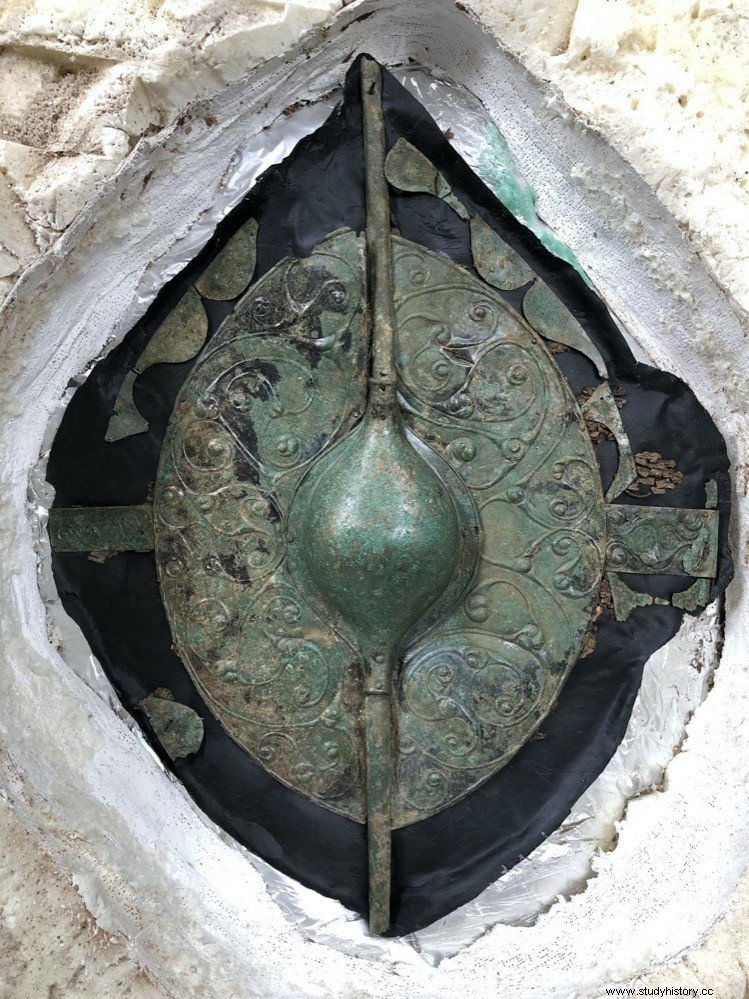A shield discovered during excavations prior to the construction of a housing estate in Pocklington, a town located in the county of East Yorkshire in England, and recently restored, is already described as the most significant finding of the Iron Age in this century .
The shield was part of an impressive tomb, in which the remains of a warrior, the shield and a chariot with two horses appeared. The body of the warrior, about 46 years old, had been placed on the shield, as reported by The York Press.
According to the experts who have been able to examine the shield, it is the most important piece of Celtic art found in the British Isles, dating from between 320 and 174 BC

The style of the shield is, according to Paula Ware of MAP Archaeological Practice, typical of the La Tène culture, which spread between the 5th and 1st centuries BC. from the area of the Alps through central Europe, France, the west of the Iberian Peninsula, the British Isles and part of Eastern Europe.
The most interesting thing is that it is made with the repoussé technique. , a metalworking technique in which a malleable metal is formed by hammering from the reverse side to create a low-relief design. In this case, the low relief presents evidence of organic forms, such as spiral mollusk shells that create a three-legged triskel motif, with a highly decorative asymmetrical design that draws the eye to the center.

The shield has a scalloped edge. This hitherto unknown design feature is unmatched by any other Iron Age find in Europe, adding to its valuable uniqueness. Popular belief is that the elaborate metal shields were purely ceremonial, reflecting status, but were not used in battle. Our research challenges this with evidence of a typical shield puncture wound from a sword. Signs of repairs can also be seen, suggesting that the shield was not only old, but also likely to have been well used said Paula.
The person buried with the shield must have been a highly respected member of the community, as he was surrounded by the remains of six pigs, believed to be an offering, and the grave of another wounded younger warrior appeared next to him.
